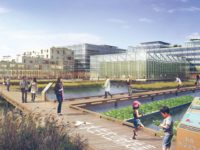This summer, in the wake of pandemic isolation, access to outside space is more important than ever before. But successful parkland and landscapes cannot be simply about respite and recreation alone: as climate change intensifies, resilience is equally critical. The projects below—from the cultivated to the untamed—provide healthy escapes, demonstrate a sensitivity to local conditions, and combat the effects of a warming planet.
Continuing Education

To earn one AIA learning unit (LU), including one hour of health, safety, and welfare (HSW) credit, read the landscape Building Type Studies articles below, and complete the quiz. Upon passing the test, you will receive a certificate of completion, and your credit will be automatically reported to the AIA. Additional information regarding credit-reporting and continuing-education requirements can be found at continuingeducation.bnpmedia.com.
- Kö-Bogen II by Ingenhoven Architects
- CityPlace and CityPlace Park by OJB Landscape Architecture
- Louisiana Children’s Museum by Mithun
- Pier 3 at Brooklyn Bridge Park by Michael Van Valkenburgh Associates
- The Beach at Expedia Group by Surfacedesign
Learning Objectives
- Discuss how landscapes can be designed to serve as both green infrastructure and as amenities.
- Explain green infrastructure’s role in mitigating stormwater runoff and in removing contaminants from that runoff.
- Describe how landscapes can be designed to help reduce instances of flooding.
- Discuss other ecological services provided by green infrastructure, including the augmentation of wildlife habitat and the mitigation of the urban heat-island effect.
AIA/CES Course #K2008A





Post a comment to this article
Report Abusive Comment